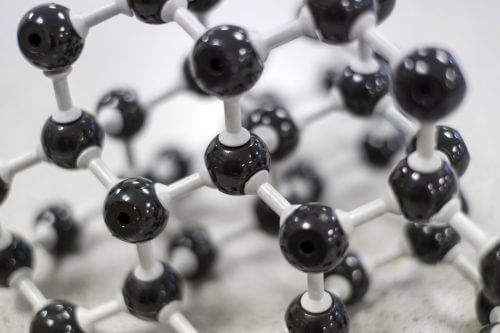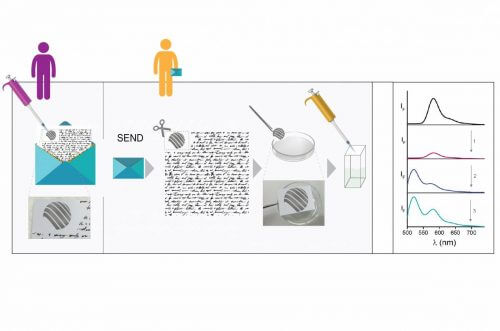The institute's scientists have developed molecules that may be used to encrypt information and interpret it. Apart from encryption, these molecules could also be used in the fields of medicine, for example for the purpose of reporting on processes that take place inside living cells.

Fans of spy and mystery books are of course familiar with stories about letters written in invisible ink, as well as more advanced methods for encrypting information. Weizmann Institute of Science scientists recently developed a method that combines these two - in a single molecule. Dr. David Margolis, from the department of organic chemistry at the institute, who headed the research team, says that the findings may allow unconventional ways to secure information on the one hand, and "spying" on living cells, on the other. The research findings were recently published in the scientific journal Nature Communications..
In the scenario that Dr. Margolis and his team envision, the recipient of an encrypted message, containing a list of apparently random numbers, could decipher the message using simple and accessible chemical substances, and with the help of a "code machine" the size of a molecule - which can be easily hidden, for example, in a tiny spot on the edge of a letter , or on a page in a book. To reveal the message, the recipient only needs to cut out the tiny square where the molecule was hidden, place it in the spectrometer and add a substance, for example soft drink, beer or cleaning fluid. The particular substance can be, in principle, any pre-agreed chemical substance, which is known only to the recipient and the sender. These "chemical decoders" may also be hidden on paper - and sent by mail.
When the decoding material comes in contact with the cipher molecule, a unique numerical output is produced - according to the intensity of the radiation at each wavelength - and it will serve as a key for decoding. Subtracting this numeric key from the encrypted message will produce a new set of numbers to match those in the table, each assigned to a single letter in the alphabet.

"Using invisible ink to send messages can in principle prevent electronic tracking, but simple stealth ink (such as lemon juice and other types), which was used in the past to hide messages, can be easily detected. Our molecule, like an invisible ink, protects the information using simple and accessible materials, yet gives good protection."
The molecules designed by Dr. Margolis and his group members, Tanmay Sarkar, Kruthpandi Salvakumar and Laila Mutai, constitute an advanced type of fluorescent sensors. These molecules, which "light up" when they encounter a certain substance, are often used in chemical or biological research, to diagnose the presence or identify levels of certain molecules. But while normal sensors usually bind one molecule and illuminate in one color, the new code molecule can bind a large amount of different substances and emit light in many colors in response - a different shade in response to each substance it encounters, including ions of metals, acids, bases, solvents, proteins and sugars.

"Similar operating principles," says Dr. Margolis, "are at the root of the activity of protein receptors in our olfactory system, which can bind molecules of many different odorants and sense them."
The creation of the encryption key is the reverse of the decoding process: the sender and the recipient use the same molecule and the same table, and the same decoding material, which can be changed daily or even hourly, as needed. The scientists have successfully used the molecular encryption method with several materials - metals, biological molecules and solvents, and even soft drinks. The ability of the molecules to react to so many substances frustrates, from a practical point of view, attempts to guess the identity of the decoding substance. In fact, the scientists have also developed a method to protect the decryption key with a password, which consists of three different materials that must be added in the correct order.
In fact, these molecules could also be used in the fields of medicine. Sensor molecules of this type may enter living cells, test amounts and levels of a variety of substances, and report the findings to researchers and doctors. This type of reporting could perhaps, in the future, give a more complete picture of an activity or disease.
Science books
Changing simple factors, even one decryption material chosen at random, could yield more than 1,000 encryption keys.
